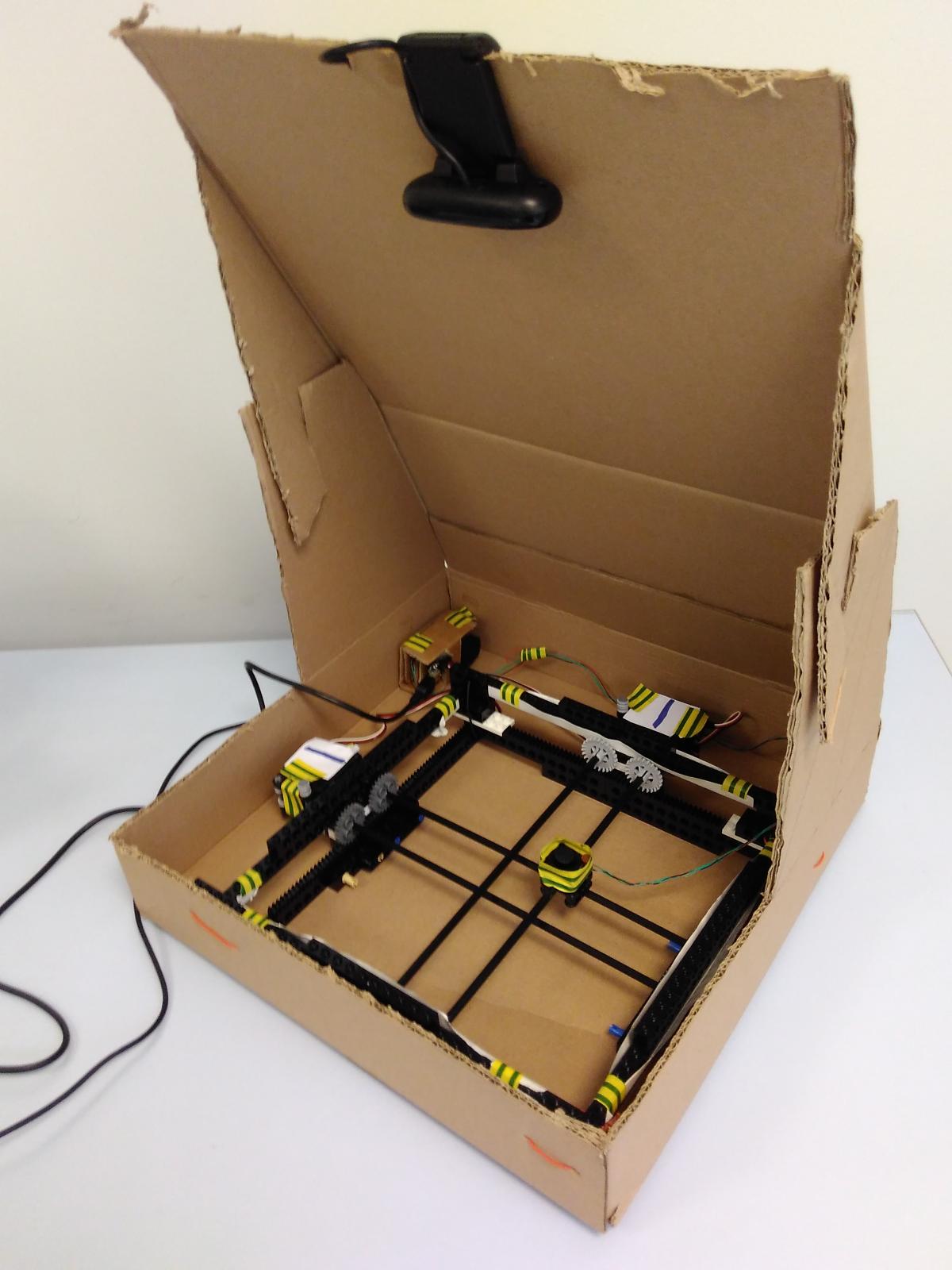In the context of projects NAV-VIR and TETMOST, we tested several model of vibrating surface haptic tablets with visually impaired persons. The results showed that it was very difficult, and sometime impossible, to perceive the shape of displayed objects, mainly because it was not possible to feel edges of the objects. I then proposed a concept for a Force Feedback Tablet, called F2T. This tablet is composed of a flat thumbstick on a mobile support. Two motors modify the resistance force applied to the joystick movement to simulate friction forces or object edges.
We constructed a first prototype using Lego to test and validate the concept. This prototype is actuated with two continuous rotation servomotors, and position is obtained with a top-view camera.
Test with a variable friction.
This basic prototype allowed the development and test of several haptic effects, both passive and active: solid and fluid friction, edges and height variations, flows, attractor... It is also possible to guide the user to present the image content.

First prototype of the F2T with its top-view camera.
Red encodes fluid friction.
Blue encodes solid friction.
Green encodes height variations and edges.
Active effects: flows.
Another active effect: rails. Finger is deviated in a given direction.
It is also possible to guide the user to present the image content before exploring it.